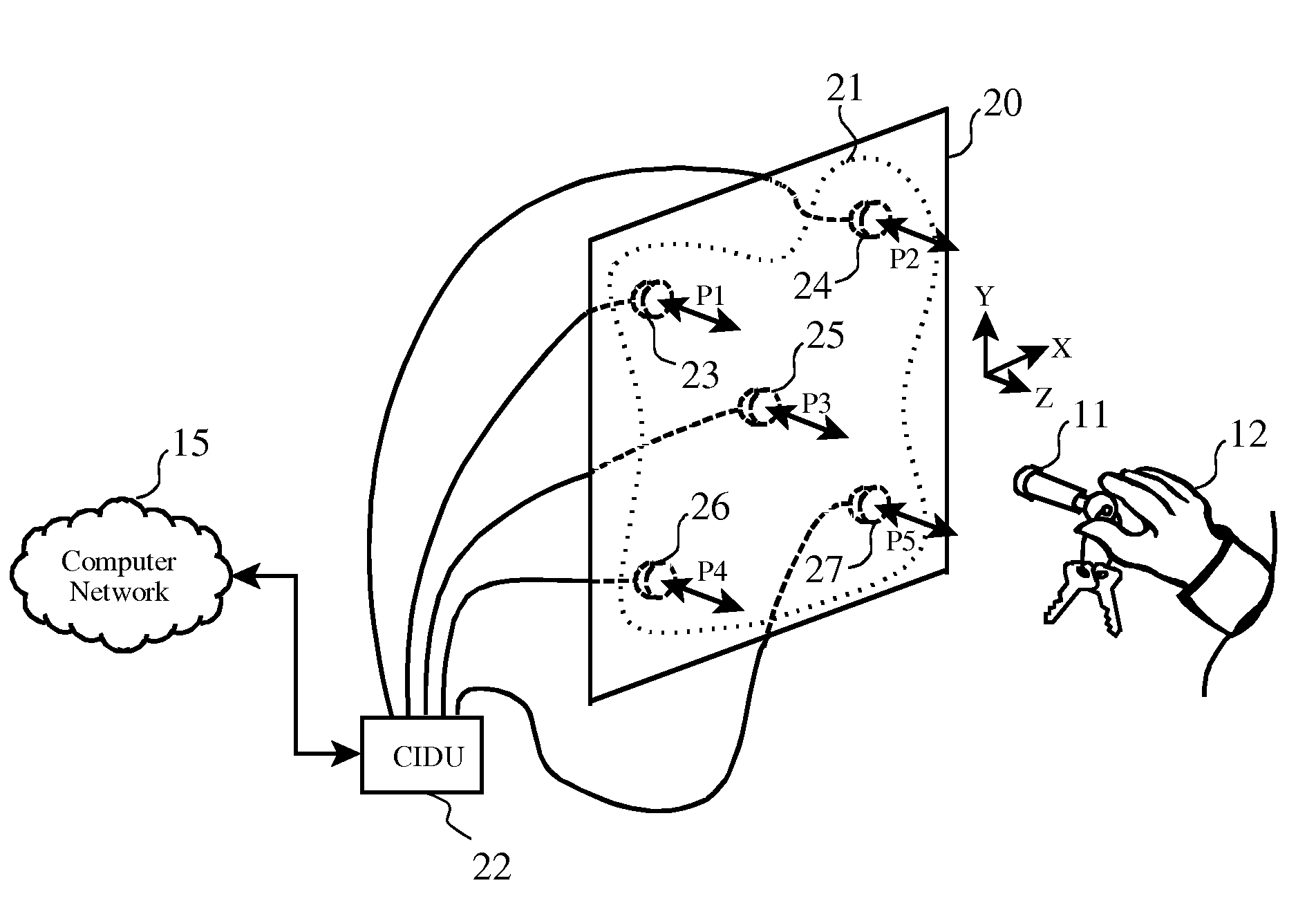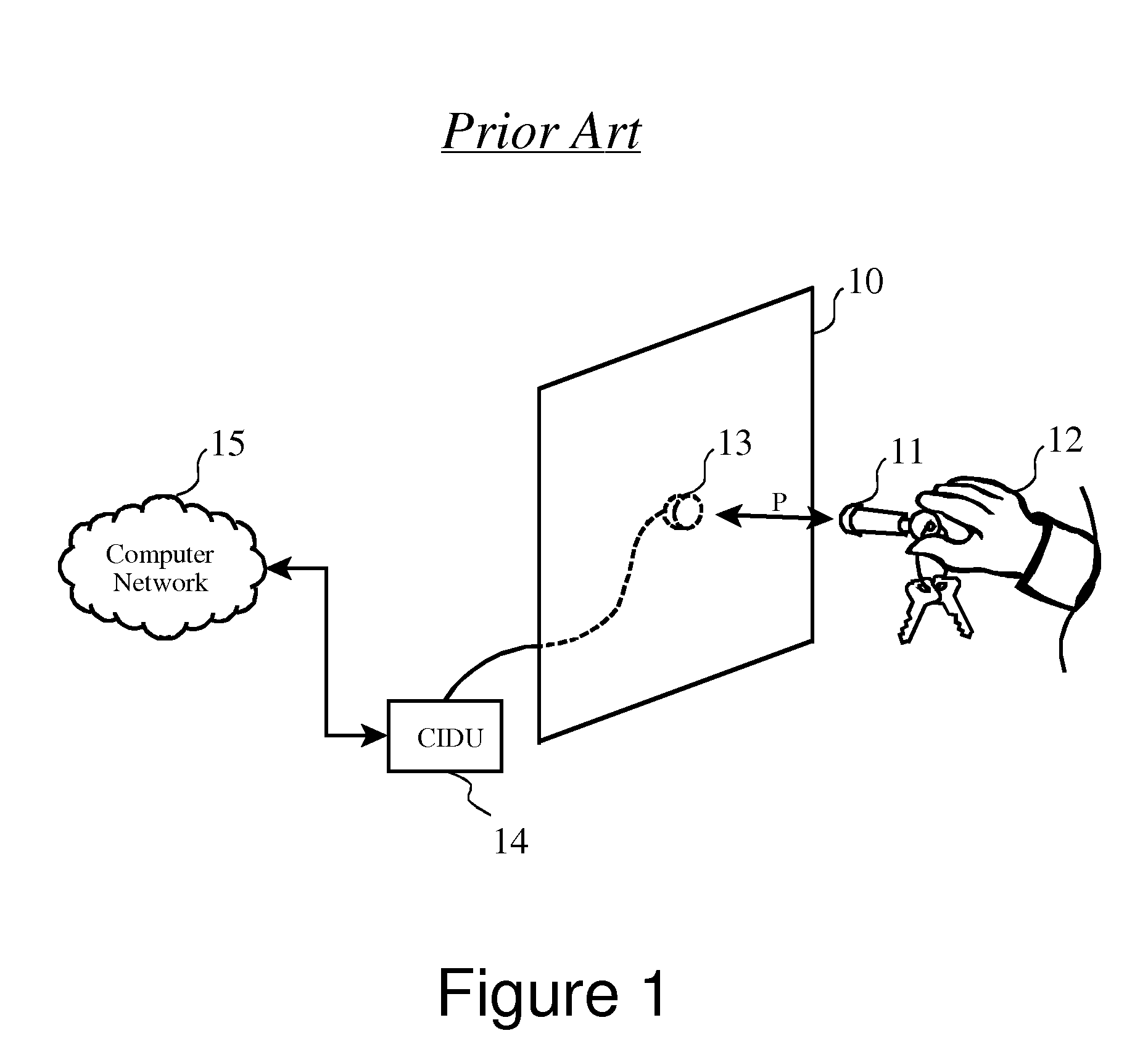Free-space Gesture Recognition for Transaction Security and Command Processing
a gesture recognition and command processing technology, applied in the field of user identification, can solve the problems of rarely used systems to actually perform signature recognition, high fraud risk of pins, and inability to verify the rf id process, etc., to achieve quick and efficient handling and enhance the security of the device
- Summary
- Abstract
- Description
- Claims
- Application Information
AI Technical Summary
Benefits of technology
Problems solved by technology
Method used
Image
Examples
Embodiment Construction
[0024]The present invention augments and improves the RF ID technology which is well known in the art. It provides a practical and processing-efficient method of allowing an RF ID holder to define one or more signature “gestures” as a means for enhanced personal identification, without compromising the convenience of the quick and easy use of an RF ID for user identification. Additional embodiments which employ other types of gesturing instruments and sensors, such as passive infrared detectors and acoustic detectors, optionally in combination with RFID technology, are also possible.
[0025]One possible method to provide this type of gesture recognition would be to employ any of the well-known gesture recognition algorithms which operate on sequenced digitized video images. Such technology has been developed (and remains in development) for applications such as allowing handicapped access to computer systems for users who cannot operate a standard computer keyboard or mouse. This syst...
PUM
 Login to View More
Login to View More Abstract
Description
Claims
Application Information
 Login to View More
Login to View More - R&D
- Intellectual Property
- Life Sciences
- Materials
- Tech Scout
- Unparalleled Data Quality
- Higher Quality Content
- 60% Fewer Hallucinations
Browse by: Latest US Patents, China's latest patents, Technical Efficacy Thesaurus, Application Domain, Technology Topic, Popular Technical Reports.
© 2025 PatSnap. All rights reserved.Legal|Privacy policy|Modern Slavery Act Transparency Statement|Sitemap|About US| Contact US: help@patsnap.com



